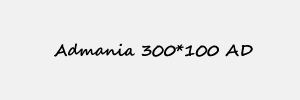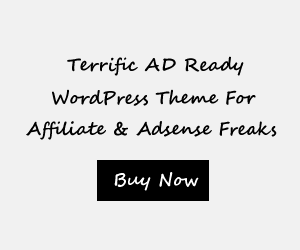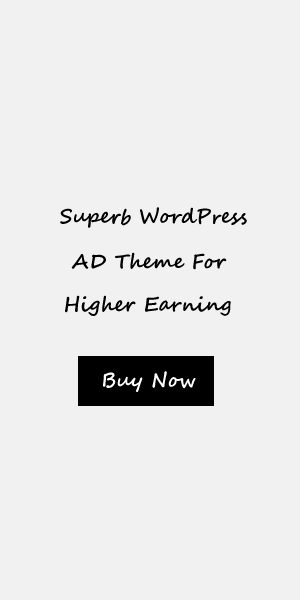Flutter Animated Default Text Style Widget ultimate guide and examples
Introduction to Flutter Animated Default Text Style Widget
Overview of Flutter Animated Default Text Style Widget
The Flutter Animated Default Text Style widget is a powerful tool for animating the style of text within your Flutter application. It allows you to smoothly transition between different text styles, such as changing the font, color, size, and more. This can be especially useful when you want to create eye-catching animations or provide visual feedback to the user.
With the Animated Default Text Style widget, you can define a starting text style and an ending text style. The widget then automatically animates the transition between these two styles. This eliminates the need for complex animation logic and makes it easy to achieve smooth and professional-looking text animations.
How to install and import Flutter Animated Default Text Style Widget
To use the Flutter Animated Default Text Style widget in your application, you need to first install the Flutter SDK and set up your development environment. Once you have done that, you can follow these steps:
- Open your Flutter project in your preferred code editor.
- Open the pubspec.yaml file.
- Add the following line to the dependencies section:
animated_text_kit: ^4.0.0. - Save the file.
- Run the command
flutter pub getto fetch the library. - Import the package in your Dart file:
import 'package:animated_text_kit/animated_text_kit.dart';.
Once you have completed these steps, you can start using the Animated Default Text Style widget in your application.
Getting Started with Flutter Animated Default Text Style Widget
Creating a basic Flutter app
The first step to using the Flutter Animated Default Text Style widget is to create a basic Flutter app. This can be done by following these steps:
- Create a new Flutter project using your preferred development environment.
- Open the project in your code editor.
- Replace the code in the main.dart file with the following code:
import 'package:flutter/material.dart';void main() => runApp(MyApp());class MyApp extends StatelessWidget { @override Widget build(BuildContext context) { return MaterialApp( title: 'Flutter Animated Default Text Style', theme: ThemeData( primarySwatch: Colors.blue, ), home: MyHomePage(), ); }}class MyHomePage extends StatelessWidget { @override Widget build(BuildContext context) { return Scaffold( appBar: AppBar( title: Text('Flutter Animated Default Text Style'), ), body: Center( child: Text( 'Hello World', style: TextStyle(fontSize: 24), ), ), ); }}Importing and initializing Flutter Animated Default Text Style Widget
To use the Flutter Animated Default Text Style widget, you need to import it into your Dart file and initialize it. Follow these steps:
- Open the main.dart file in your code editor.
- Add the following import statement at the top of the file:
import 'package:animated_text_kit/animated_text_kit.dart';- Replace the existing Text widget in the MyHomePage class with the following code:
class MyHomePage extends StatelessWidget { @override Widget build(BuildContext context) { return Scaffold( appBar: AppBar( title: Text('Flutter Animated Default Text Style'), ), body: Center( child: DefaultTextStyle( style: TextStyle(fontSize: 24), child: AnimatedDefaultTextStyle( duration: Duration(seconds: 1), style: TextStyle(fontSize: 48), child: Text('Hello World'), ), ), ), ); }}Now you are ready to start using the Flutter Animated Default Text Style widget in your app. You can customize the animation by adjusting the duration and the desired text style.
Getting Started with Flutter Animated Default Text Style Widget
Creating a basic Flutter app
To begin using the Flutter Animated Default Text Style widget, you first need to create a basic Flutter app. Follow these steps:
- Create a new Flutter project using your preferred development environment.
- Open the project in your code editor.
- Replace the code in the main.dart file with the provided code snippet.
import 'package:flutter/material.dart';void main() => runApp(MyApp());class MyApp extends StatelessWidget { @override Widget build(BuildContext context) { return MaterialApp( title: 'Flutter Animated Default Text Style', theme: ThemeData( primarySwatch: Colors.blue, ), home: MyHomePage(), ); }}class MyHomePage extends StatelessWidget { @override Widget build(BuildContext context) { return Scaffold( appBar: AppBar( title: Text('Flutter Animated Default Text Style'), ), body: Center( child: Text( 'Hello World', style: TextStyle(fontSize: 24), ), ), ); }}Importing and initializing Flutter Animated Default Text Style Widget
To use the Flutter Animated Default Text Style widget, you need to import it into your Dart file and initialize it. Follow these steps:
- Open the main.dart file in your code editor.
- Add the following import statement at the top of the file.
import 'package:animated_text_kit/animated_text_kit.dart';- Replace the existing Text widget in the MyHomePage class with the provided code snippet.
class MyHomePage extends StatelessWidget { @override Widget build(BuildContext context) { return Scaffold( appBar: AppBar( title: Text('Flutter Animated Default Text Style'), ), body: Center( child: DefaultTextStyle( style: TextStyle(fontSize: 24), child: AnimatedDefaultTextStyle( duration: Duration(seconds: 1), style: TextStyle(fontSize: 48), child: Text('Hello World'), ), ), ), ); }}Understanding the Properties of Flutter Animated Default Text Style Widget
Explaining the different properties of Flutter Animated Default Text Style Widget
The Flutter Animated Default Text Style widget allows you to create animated text styles. it has various properties that can be customized to achieve different effects:
- duration: Specifies the duration of the animation in seconds. The text style will transition from the current
style to the new style over this duration. - style: Represents the final text style after the animation is complete. This includes properties such as font
size, color, and decoration. - child: The child widget that will be animated. This can be a Text widget or any other widget that displays text.
Using font, color, size, and other properties for text styling
With the Flutter Animated Default Text Style widget, you can easily modify the font, color, size, and other properties of your text. The style property accepts a TextStyle object, which allows you to specify these properties.
You can customize the font family by setting the fontFamily property of the TextStyle. To change the color, use the color property. The fontSize property is used to adjust the size of the text.
Other properties include fontWeight for adjusting the thickness of the text, decoration for adding text decorations such as underline or strike-through, and letterSpacing for adjusting the spacing between characters.
By combining these properties and using the Flutter Animated Default Text Style widget, you can create dynamic and engaging text animations in your Flutter app.
Customizing Flutter Animated Default Text Style Widget
Creating unique text styles using Flutter Animated Default Text Style Widget
One of the main benefits of using the Flutter Animated Default Text Style widget is the ability to create unique and dynamic text styles. By specifying different properties, you can achieve various effects and enhance the overall visual appeal of your text animations. Here are a few examples of how you can customize the text style:
Font Family: Modify the font family by setting the
fontFamilyproperty of the
TextStyle. This allows you to choose from a wide range of available fonts and create a personalized look for
your text.
Color: Use the
colorproperty to change the color of the text. This enables you
to match the text color with the overall theme of your app or create attention-grabbing color schemes.
Size: Adjust the size of the text by using the
fontSizeproperty. You can
increase or decrease the font size to emphasize certain words or create a visual hierarchy within your text
animations.
Font Weight: The
fontWeightproperty allows you to adjust the thickness of the
text. You can make the text bold or add different levels of emphasis to specific parts of your text
animations.
Decoration: Add text decorations such as underline or strike-through using the
decorationproperty. This can be useful for highlighting certain words or conveying a specific
meaning through your text animations.
Letter Spacing: Use the
letterSpacingproperty to adjust the spacing between
characters. This can be helpful for achieving different visual effects or improving the readability of your
text animations.
Combining different properties to achieve desired text effects
The true power of the Flutter Animated Default Text Style widget lies in its ability to combine multiple properties to create unique and eye-catching text effects. By experimenting with different values for properties like `fontSize`, `color`, and `fontWeight`, you can achieve various results.
For example, you can create a subtle animation by smoothly transitioning from a small font size to a larger font size over a specific duration. Combine this with a different color scheme and font weight changes, and you can create visually stunning text animations that draw attention to certain parts of your app.
Additionally, you can use the child property of the Animated Default Text Style widget to animate
different types of widgets, not just Text widgets. This opens up endless possibilities for creating dynamic and
engaging text animations in your Flutter app.
In conclusion, the Flutter Animated Default Text Style widget provides a powerful tool for customizing and animating text styles in your Flutter app. By leveraging its various properties and combining them creatively, you can create visually appealing and engaging text animations that enhance the user experience.
Implementing Animations with Flutter Animated Default Text Style Widget
Using animations to change text styles dynamically
The Flutter Animated Default Text Style widget allows developers to create unique and dynamic text styles by animating different properties. By specifying various values for properties such as font family, color, size, font weight, decoration, and letter spacing, you can achieve visually appealing text effects that enhance the overall visual appeal of your app.
Applying animation to properties like font, color, and size
With the Flutter Animated Default Text Style widget, you can easily animate properties like font, color, and size to create engaging text animations. By smoothly transitioning from one style to another over a specified duration, you can draw attention to certain parts of your app and make the user experience more interactive and immersive. For example, you can gradually increase the font size of a heading while changing the color from blue to red to create a visually appealing animation that captures the user’s attention.
By combining different properties and experimenting with their values, you can create a wide range of text effects that suit the needs of your app. Whether you want to create subtle animations or bold and eye-catching effects, the Flutter Animated Default Text Style widget provides the flexibility and control to achieve your desired outcomes.
In conclusion, the Flutter Animated Default Text Style widget is a powerful tool for implementing animations and customizing text styles in Flutter apps. By leveraging its features and properties, developers can create visually appealing and dynamic text animations that enhance the overall user experience.
Does your Flutter app need to implement animated text styles? Look no further than the Flutter Animated Default Text Style widget! It allows developers to easily create dynamic and visually appealing text effects by animating various properties such as font family, color, size, font weight, decoration, and letter spacing. Let’s explore some examples and use cases of this powerful widget.
Example 1: Creating animated text with changing colors
Imagine you have a heading in your app that you want to draw attention to. By using the Animated Default Text Style widget, you can smoothly transition the color of the text from blue to red while also increasing its font size. This creates an eye-catching animation that captures the user’s attention and adds visual interest to your app.
Example 2: Animating text size based on user interaction
Let’s say you have a button in your app that increases the font size of some text when pressed. By using the Animated Default Text Style widget, you can animate the transition of the text’s size from its original value to the new value when the button is pressed. This not only provides a delightful user experience but also adds a touch of interactivity to your app.
By combining different properties and experimenting with their values, you can create a wide range of text effects that suit the needs of your app. Whether you want to create subtle animations or bold and eye-catching effects, the Flutter Animated Default Text Style widget provides the flexibility and control to achieve your desired outcomes.
In conclusion, the Flutter Animated Default Text Style widget is a powerful tool for implementing animations and customizing text styles in Flutter apps. It allows you to create visually appealing and dynamic text animations that enhance the overall user experience. So why not give it a try and add some flair to your app’s text?
Best Practices for Using Flutter Animated Default Text Style Widget
Tips for optimizing performance and efficiency
– When using the Animated Default Text Style widget, it’s important to consider the performance implications of animating certain properties. Animating properties such as font family and letter spacing may have a lower impact on performance compared to animating properties like color and size. Keep this in mind when choosing which text properties to animate.- If you have multiple instances of the Animated Default Text Style widget in your app, try to minimize the number of rebuilds by extracting common properties as constants or variables. This helps optimize performance by reducing unnecessary widget rebuilds.
Avoiding common pitfalls and errors
– Avoid using excessive animation durations or delays, as it can make your app appear sluggish. Experiment with different durations to find a balance between smooth animation and responsiveness.- Be mindful of how you structure your widget tree when using the Animated Default Text Style widget. In some cases, nested animation widgets can lead to unexpected behavior or performance issues. Keep an eye on the performance of your app and make adjustments as needed.
By following these best practices, you can ensure that your Flutter app’s animated text styles are optimized for performance and free from common pitfalls. The Flutter Animated Default Text Style widget is a powerful tool that allows you to create visually appealing and dynamic text animations, and by using it judiciously, you can enhance the overall user experience of your app. So go ahead, experiment with different text effects and have fun adding a touch of flair to your app’s text!
Advanced Techniques with Flutter Animated Default Text Style Widget
Creating complex animated text effects
The Flutter Animated Default Text Style widget provides a wide range of options for creating dynamic and visually appealing text animations. With a little creativity and experimentation, you can achieve complex effects that enhance the overall user experience of your app. Here are some techniques to consider:
Layered animations: Combine multiple instances of the Animated Default Text Style widget to
create layered animations. For example, you can animate the color of the text while simultaneously animating
the size or position. This can add depth and complexity to your text animations.
Custom animations: You can customize the animation curves and durations of the Animated
Default Text Style widget to create unique and eye-catching effects. Experiment with different easing
functions and timings to achieve the desired visual impact.
Text masking: Use masking techniques to reveal or hide portions of the text during the
animation. You can leverage Flutter’s clipping capabilities to create interesting effects, such as text
that appears to grow out of a shape or text that fades in and out.
Using Flutter Animated Default Text Style Widget in conjunction with other Flutter widgets
The Animated Default Text Style widget can be combined with other Flutter widgets to create even more dynamic and interactive experiences. Here are some ideas:
Gesture recognition: Use Flutter’s gesture recognition widgets, such as GestureDetector
or InkWell, to trigger the animation based on user interactions. For example, you can animate the text when
the user taps or swipes on it.
Animated transitions: Combine the Animated Default Text Style widget with Flutter’s
animated transition widgets, such as AnimatedOpacity or AnimatedContainer, to create seamless transitions
between different text styles. This can be useful for emphasizing certain parts of the text or guiding the
user’s attention.
Integration with scrollable widgets: If your app includes scrollable content, you can
synchronize the animation of the text with the scrolling motion. For example, you can animate the text as it
enters or exits the viewport, providing a smooth and immersive reading experience.
By leveraging these advanced techniques and exploring the possibilities of combining the Animated Default Text Style widget with other Flutter widgets, you can take your text animations to the next level and create truly captivating user experiences. Have fun experimenting and pushing the boundaries of your app’s design!
Conclusion
Summary of Flutter Animated Default Text Style Widget features and benefits
The Flutter Animated Default Text Style widget is a powerful tool for creating dynamic and visually appealing text animations in Flutter. It offers a wide range of options for customizing the animation curves, durations, and visual effects of the text.
By combining multiple instances of the widget, you can create layered animations that add depth and complexity to your text effects. You can also use masking techniques to reveal or hide portions of the text during the animation, creating interesting and engaging visual effects.
The Animated Default Text Style widget can be seamlessly integrated with other Flutter widgets to create even more dynamic and interactive experiences. You can trigger the animation based on user interactions using gesture recognition widgets, create smooth transitions between different text styles using animated transition widgets, or synchronize the animation with scrollable content for a more immersive reading experience.
Links to additional resources and tutorials for further learning
If you’re looking to dive deeper into using the Flutter Animated Default Text Style widget and exploring advanced animation techniques, here are some additional resources and tutorials to check out:
- Flutter documentation on Animated Default Text Style: link
- Flutter Animation tutorial: link
- Flutter Animation cookbook: link
These resources provide valuable insights, examples, and practical tips for mastering the Animated Default Text Style widget and creating captivating text animations in your Flutter apps.
With these resources and your newfound knowledge of the Animated Default Text Style widget, you’re equipped to take your text animations to the next level and create truly captivating user experiences. Keep experimenting, pushing the boundaries of design, and creating memorable interactions for your app’s users. Happy coding!






